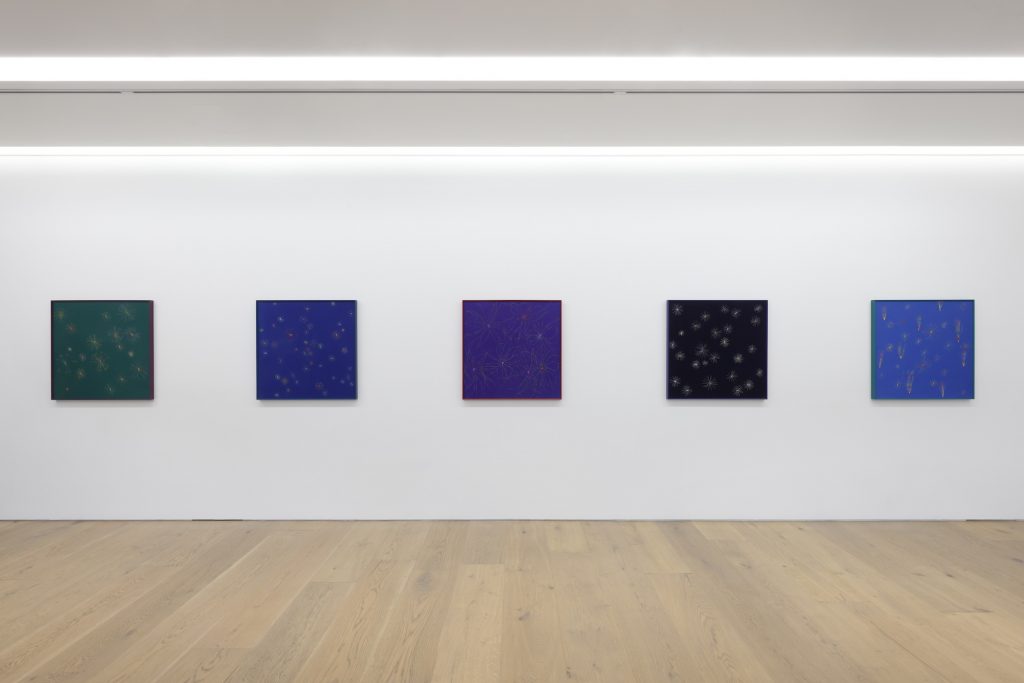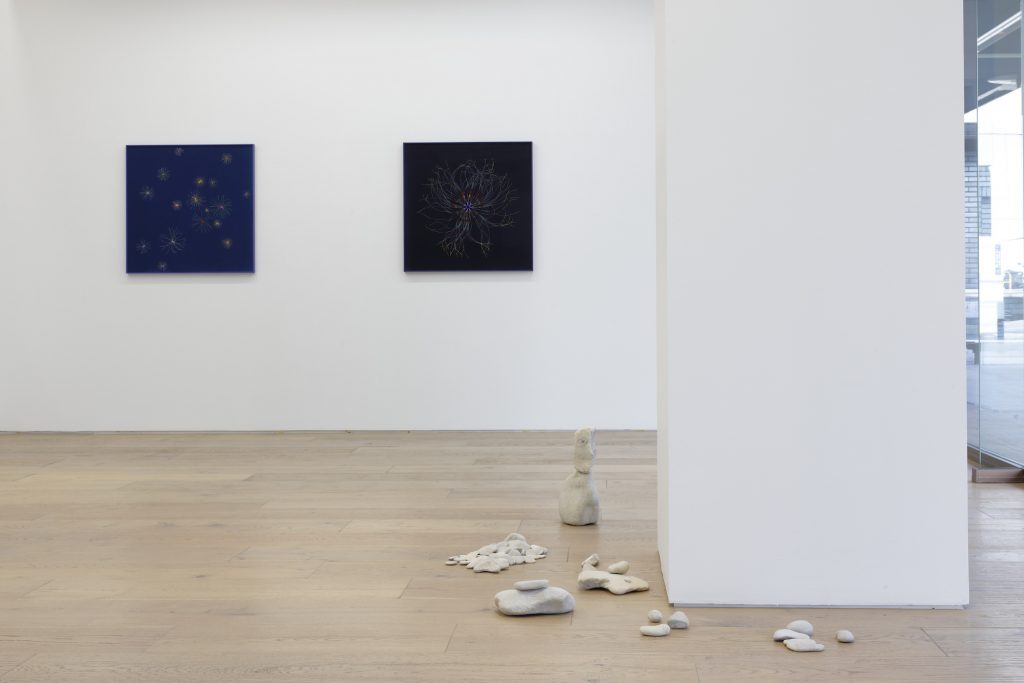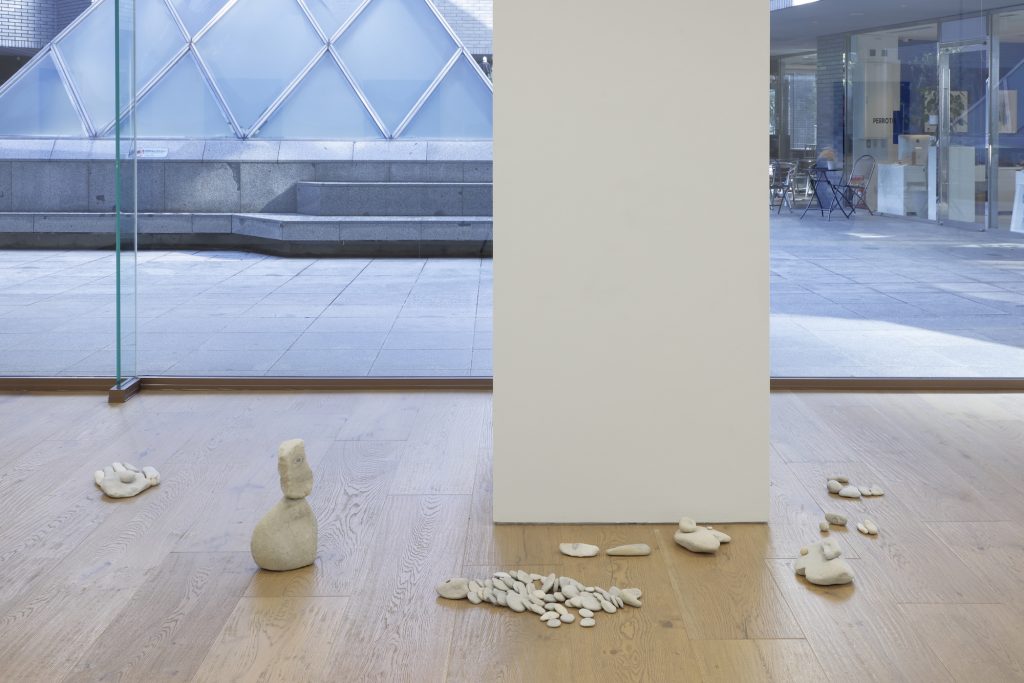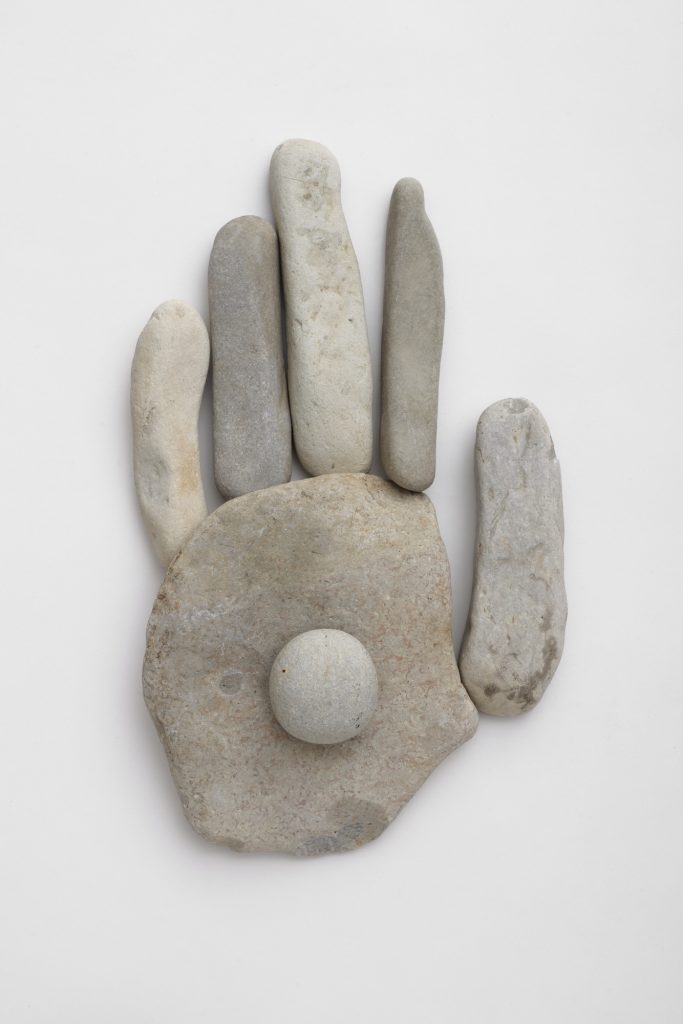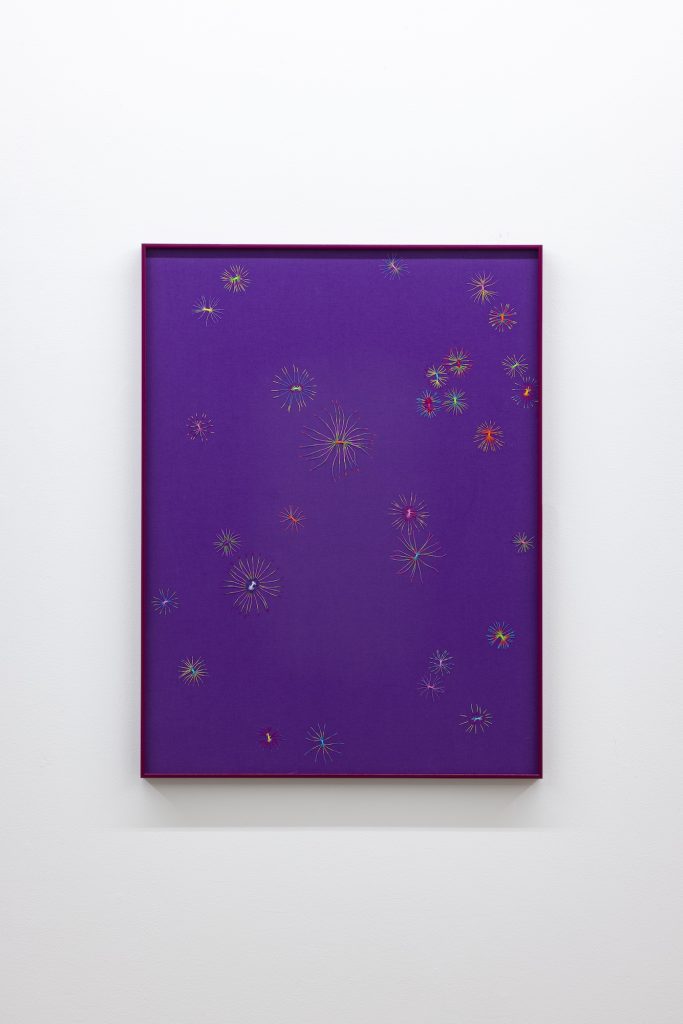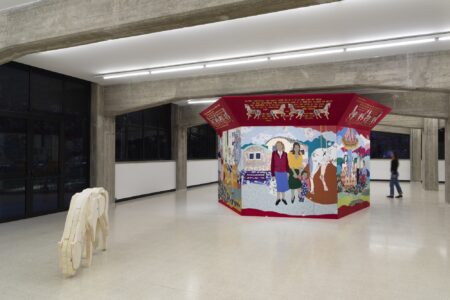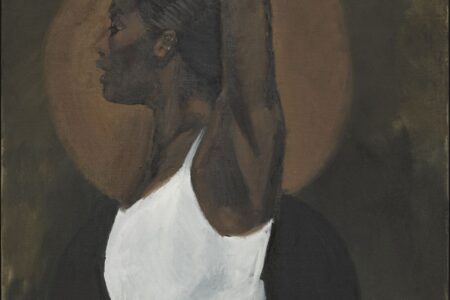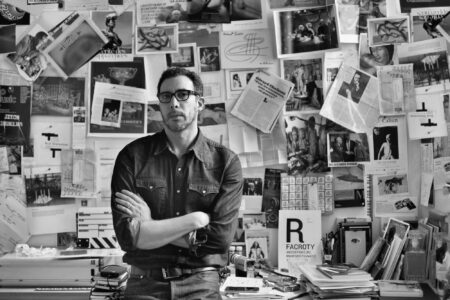Lionel Estève: What the Day Hides, The Night Shows
Lionel Estève brings the magic of the night sky and the simplicity of river stones to create a beautiful installation about the landscape.
For his first solo exhibition with Perrotin Tokyo, Lionel Estève brings the magic of the night sky and the simplicity of river stones to create a beautiful installation about the landscape. “What the Day Hides, The Night Shows”, was inspired in part by the night sky in the small village in France where the artist lives part of the year; there is no light pollution at night and people gather in their gardens to look at the sky wild with stars. This connected with an interest in pareidolia, the psychological phenomenon of the mind seeing patterns and forms where they don’t exist, such as a bear in a cloud or a face in a flower. For Estève, there is a fascination with the stars and how people have used them to place themselves in the world; “Thinking about the stars I was amazed about how people used the stars to navigate where they are on the ground or sea… and the way that people drew maps of the stars, it is totally pareidolia, this idea that there is a lion there and a scorpion here, is incredible.”
A new series of drawings on fabric titled Fragments are made with hand-painted electrical copper wire that has been twisted and shaped to resemble star-like forms and patterns. These tiny sculptures are then sewn onto a fabric background and framed like paintings as if capturing a fragment of the night sky, colourful stars floating in the void of space. The fabric used is a deeply saturated colour of either royal purple, deep blue or dark green, a nod to the shift of colours in the night sky, which is never just black.
“It is not possible to make the sky in full, it’s always a fragment,” notes Estève, “so the idea [with this series] was to make a panorama. You can put each of these fragments together and in the end as you look at all of them surrounding you, it becomes like a panorama of the sky.”
While Estève was inspired by the patterns of stars at night, many Japanese visitors saw in them colourful fireworks, which are an important part of many celebrations in the country. Personally, I saw the deepest, darkest part of the sea with the bioluminescent sea creatures. All of these various interpretations serve to confirm the concept of pareidolia and Estève’s success in creating an installation that can be ‘read’ in many different ways. There is often a childlike wonder when looking at his work which can create the feeling of discovering something new. Often, he relates a feeling of fragility and impermanence, as seen in the Tokyo exhibition in the small sculptures he made using stones from the river in his village which are transformed into fish, hands or sea creatures. Working outside near a river or the sea and using the idea of pareidolia, the artist would look at the stones until he didn’t see a stone anymore but a figure, a face or animal. For the installation in Tokyo, he brought these stones with him and placed them on the floor of the gallery, adding to his interest in creating a landscape within the gallery walls, “the stones of the earth and the stars of the sky”.
Estève plays with our perception of things even in the title of the exhibition, “What the Day Hides, The Night Shows”, which connects with the idea of how we need light to live, but even during the day there are stars around us that we can’t see and we need the night to reveal them to us in its darkness.
“What the Day Hides, The Night Shows” is up at Perrotin Tokyo through December 28, 2022.
www.perrotin.com
@galerieperrotin

